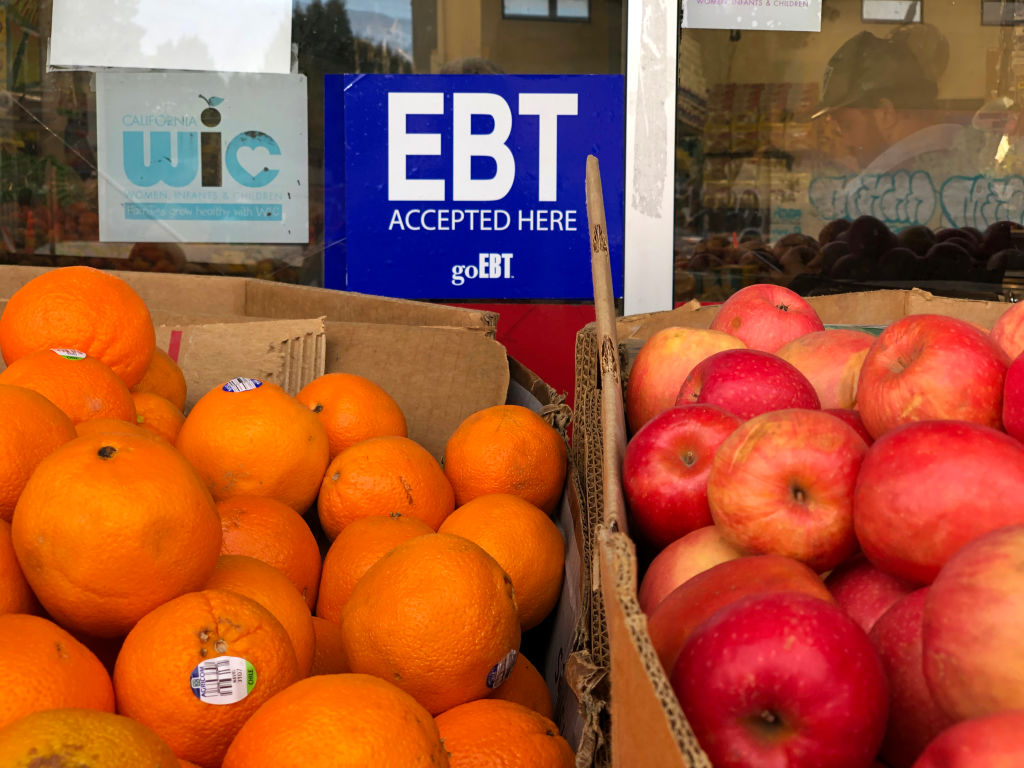
About 700,000 of Kentucky’s 4.5 million residents are considered “food insecure,” meaning they have trouble obtaining enough to eat. (Photo by Justin Sullivan/Getty Images)
Disabled by hip damage and other health conditions, JD Charles of Eastern Kentucky said the $23 a month he received in SNAP benefits (formerly known as food stamps) helped him get by.

“Usually by the last of the month, I’m broke,” said Charles, 59, who lives on Social Security disability income. “I always used that to buy groceries.”
But his benefits ended abruptly in October after new calculations by the U.S. Department of Agriculture, which administers the Supplemental Nutrition Assistance Program, found his income to be $15 over the maximum allowed for eligibility.
“Now I’m just going to be depending on God Almighty,” said Charles, who lives alone in his family home in the tiny town of Lovely in Martin County.
Charles is among 11,800 Kentuckians who lost SNAP benefits after Oct. 1, the start of the federal fiscal year, according to the Cabinet for Health and Family Services, which administers SNAP. Another 370 people saw benefits reduced.
While the changes by the federal government affect only a small portion of the about 618,000 Kentuckians who receive SNAP benefits — nearly half are children or the elderly — the benefits are important to those in need, said Eric Friedlander, secretary of the health services cabinet.
“We hate it for them,” said Friedlander, who said the cabinet is seeking ways to expand SNAP access, especially for seniors. “We see food insecurity.”
Jessica Klein, with the Kentucky Center for Economic Policy, said about 700,000 of Kentucky’s 4.5 million residents are considered “food insecure,” meaning they have trouble obtaining enough to eat.
Friedlander said the federal government recalculates eligibility for SNAP every year and considers individual income, any cost of living adjustments and what it allows for standard deductions for items such as housing, medical expenses and utilities.
One big change: During the COVID-19 pandemic, the USDA allowed an increased deduction for internet costs since many people were working at home. It reduced that to the pre-pandemic level this year, an adjustment that was enough to push some people above the income limit allowed for SNAP eligibility.
Friedlander said Kentucky asked the USDA for exemptions to the changes, but the request was denied.
SNAP benefits vary by income and household size but generally are allowed for people at or below 130% of the federal poverty level. A family of three qualifies if their annual income does not exceed $33,576 a year, according to the USDA.
Most adults between ages 18 and 54 must report work hours to be eligible for more than three months of SNAP benefits a year. Individuals without documented immigration status are not eligible.
The minimum SNAP benefit is $23 a month.
That’s what Charles, of Martin County, received until November when he was notified last month his SNAP benefit was ending.
A former newspaper reporter in West Virginia and Eastern Kentucky, Charles said he was forced to quit working because of his deteriorating health that has included a series of hip replacements and two lengthy hospital stays.
The $23 a month in SNAP benefits helped him stretch his grocery budget, along with some food he’s able to obtain from commodity goods. Rising food prices have made it harder to keep food in the house, he said.
And Charles said he knows he’s not the only one affected — a childhood friend also in his small town also lost SNAP benefits.
“I live in a little tiny town,” Charles said. “If there’s two of us in just this one area, there had to be hundreds, if not thousands.”
Klein said studies show some people who are eligible for SNAP or other benefits are not aware of that and should check into their eligibility.
More information is available by calling the cabinet at 1-855-306-8959 or online at the Kentucky benefits site kynect.
YOU MAKE OUR WORK POSSIBLE.

